How to Buy a Great Pair of Hiking Boots
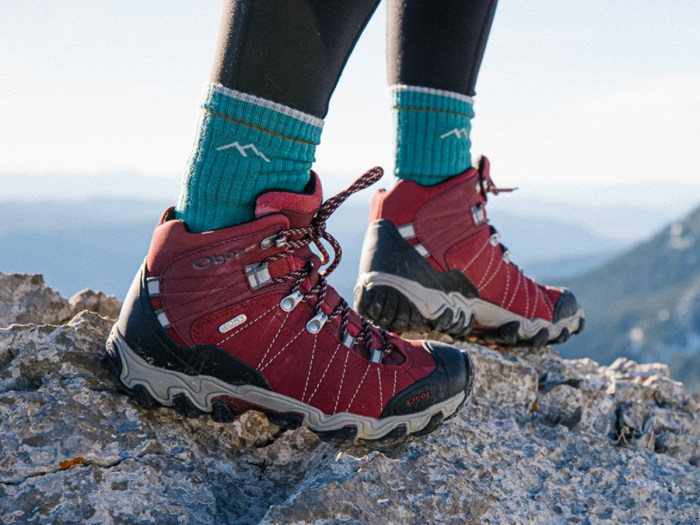
Whether you’re a dayhiker conquering local hills or a hardcore wilderness backpacker, your most important piece of gear is the same — and it might be the item you’ve put the least thought into buying: your boots.
The wrong hiking footwear can send a backcountry adventure downhill fast. Take your first steps on your next successful adventure with these buying tips and one of these top-performing shoes and boots.
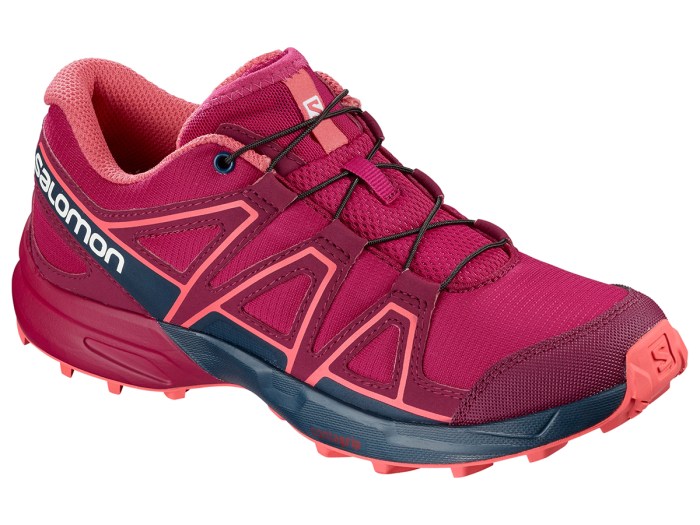
The low-cut SALOMON SPEEDCROSS J SHOES ($75, salomon.com) are lightweight, comfortable and grippy. Non-waterproof mesh uppers provide exceptional breathability on the hottest days. Features like a molded midsole and one-pull lacing deliver sneaker-like fit and comfort. The toe cap protects feet from inevitable bashing on rocks and helps the shoes endure many days of playground use, and the outsole sticks to everything from steep slabs to rocky trails. While they’re not waterproof, they will dry very quickly. Best for day hiking and everyday wear. 6.3 oz.
HIKING BOOTS OR HIKING SHOES?
Plain sneakers or trail-running shoes are fine for an occasional hike but will not provide the support, traction, protection, durability or comfort of good hikers.
If you’re planning to do multi-day hiking and backpacking, or trail activities in cold or wet weather, you’ll want sturdier hiking shoes or boots with extra ankle support and possibly waterproof protection.
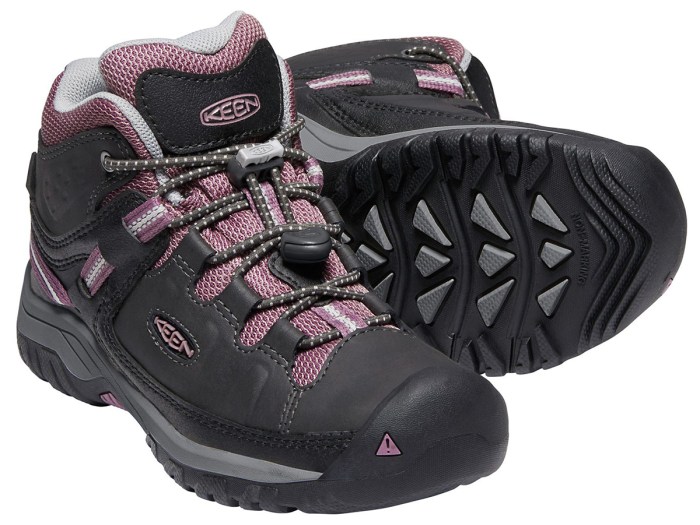
Modeled on the popular adult shoes, the KEEN KIDS’ TARGHEE WATERPROOF LOW-CUT SHOES ($53, keenfootwear.com) are built for hard use. The membrane keeps feet dry. The one-pull lacing system snugs easily and tightly around your feet, and the padded tongue, collar and heel cradle your foot comfortably. Uppers made of leather and synthetic textiles with a mesh lining are durable and breathable. Bonus: These shoes use leather sourced from tanneries that minimize chemical use. 9.7 oz.
HOW MUCH SHOULD HIKING BOOTS COST?
How much should you spend? It depends on what features you want. The price tag rises with a waterproof-breathable membrane like Gore-Tex, leather uppers and a beefy toe bumper to improve durability, an outsole designed for good traction in varied terrain or simply a sturdier design. It’s worth it to pay for these features if you’ll be hiking frequently in wet environments or on rugged trails.
Since you’re probably growing out of your shoes quickly, durability might be less important. Odds are, you’ll grow out of them long before you’ll wear them out. So cheaper entry-level shoes and boots might be good enough. Also look for clearance sales at local shops and online deals. When you see a really good sale, think about planning ahead and buying for the next size you’ll need.
Some troops have a shoe/boot bin or hand-me-down program. Donate a pair of boots you’ve outgrown, and grab a pair that fits. And if your troop doesn’t have a boot bin, start one! (Remember: A new set of $20 insoles can really freshen up a pair of used boots.)
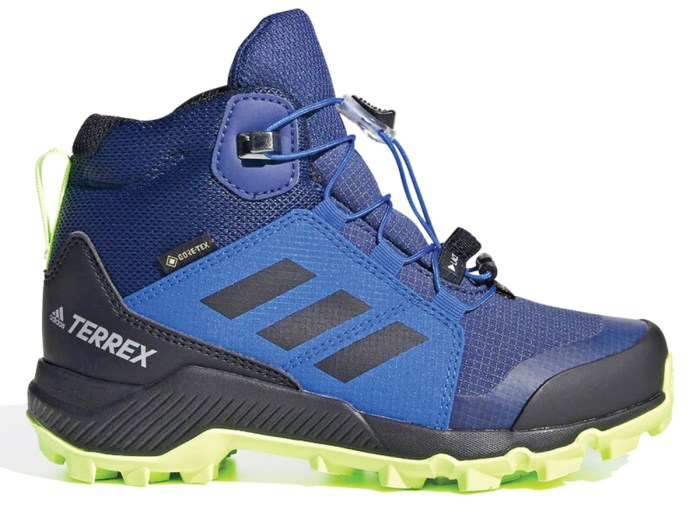
Looking for a light, comfortable, well-fitting boot at a good value for everything from day hikes to introductory backpacking trips? Check out the ADIDAS TERREX MID GTX KID’S HIKING BOOT ($110, adidas.com). Armored with tough nylon ripstop uppers and a molded toe cap, these mid-cuts are built for rugged trails. The Gore-Tex membrane provides top-notch waterproofing. One-pull lacing makes them easy to put on and take off. The lugged outsole grips dry and wet ground. 7.8 oz.
HOW TO FIT A HIKING BOOT
Fit varies greatly between brands. Buy boots at a store where they know how to measure your feet. When trying on shoes and boots, make sure you’re wearing the type of socks you’ll be hiking in. The heel should be snug with enough wiggle room for your toes up front. Kick the floor — your toes shouldn’t hit the end. Try on different brands and walk around in them in the store. Spend at least 10 minutes test driving them. It might time to get a good fit, but never as long as it takes to limp painfully for miles down a trail.
If you buy online, try them inside your house, because once you’ve worn new shoes outside you usually can’t return them.
If you’re planning to do winter hiking, look for extra toe room for thicker socks and better foot circulation.
BREAK IN YOUR BOOTS
While your new boots or shoes might feel comfortable right out of the box, it’s not a good idea to wear brand-new shoes on a long hike without breaking them in first — unless, of course, you like painful blisters! So start by wearing your new shoes to school, around the house, anywhere you can. The more time you spend in them ahead of time, the better off you’ll be on the trail. This is especially important with new leather boots.
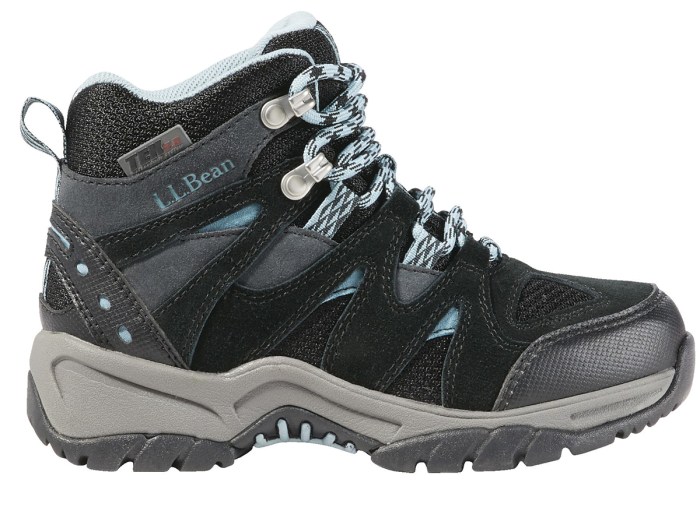
The first rule of shopping for gear at a good value: Look for a brand with a longstanding reputation. The mid-cut L.L. BEAN KIDS’ WATERPROOF TRAIL MODEL HIKERS ($59, llbean.com) have a lace-up closure for a fit that conforms to the foot, a waterproof-breathable membrane and uppers that marry waterproof suede with breathable polyester mesh for durability while keeping your feet dry. L.L. Bean’s EVA midsole provides comfort while the versatile Trail Trac outsole grips just about any type of terrain you step on. 1 lb. 11 oz.
WATERPROOF BOOTS?
Get boots with a membrane to keep your feet dry if you often hike in wet conditions. Waterproof membranes like Gore-Tex, eVent and others usually do a good job of keeping the water out (think: stream crossings, heavy rains).
If you’re a fair-weather hiker, footwear without a membrane is far more breathable, keeping your feet cool on hot days

If you’re stepping into adult sizes and need a tough, comfortable, well-fitting boot at a good value, try on the OBOZ BRIDGER MID WATERPROOF ($180, obozfootwear.com). A single-density midsole and forefoot plate deliver solid support and protection underfoot. The widely spaced multidirectional lugs give reassuring traction on rocks, packed and loose dirt, and scree. Leather uppers and a rubber toe bumper stand up to hard use. Oboz is known for its nice fit, including a roomy toe box, and the brand’s unusually well-cushioned insole. 2 lbs. 6 oz.
TRACTION
Often overlooked is the outsole design, which determines how well your boots grip the ground. Look for deep, widely spaced lugs for mud, scree, loose dirt and snow. Smaller multidirectional lugs are common in lighter shoes for varied terrain, while a smoother grippy patch under the toes helps shoes stick when scrambling over rocks.
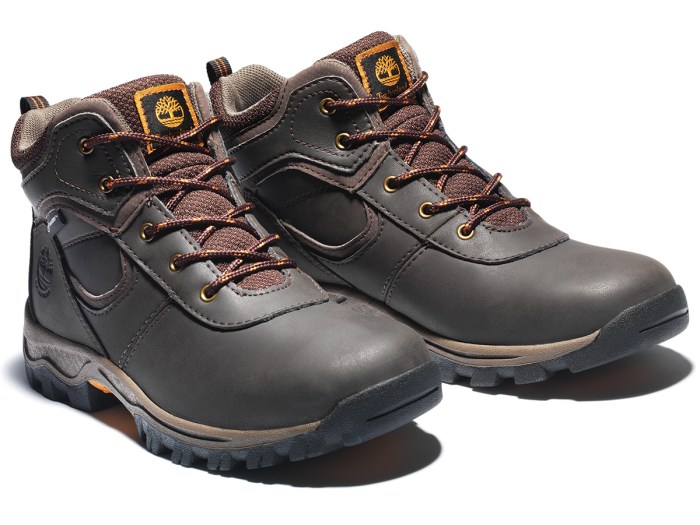
Get the quality of an adult boot packed into a smaller package in the TIMBERLAND JUNIOR MT. MADDSEN WATERPROOF HIKING BOOTS ($80, timberland.com). These rugged hikers boast many of the same features of the adult versions: good support and cushioning for full days on the trail, a waterproof-breathable membrane, secure lacing for a snug fit, premium full-grain waterproof leather uppers, and outsole lugs that bite into any surface and are aligned with the foot’s pressure points to maximize traction. 1 lb. 8 oz.
LEATHER VS. SYNTHETIC HIKING BOOTS
Usually less expensive and lighter, synthetic uppers vary significantly but can offer a versatile combination of durability and breathability. More expensive leather uppers are often more durable and conform to your feet, improving the fit. Either type may be paired with a membrane.
CARING FOR YOUR HIKING BOOTS
Always clean your boots after every hike. If you have leather hiking boots, apply a leather treatment like Nikwax every once in a while to keep them waterproof and prevent cracking and drying out. Never dry wet boots by the campfire. The heat will damage the soles and weaken the glue that holds them together. To dry them out, just remove the insoles and stuff your boots with newspaper.
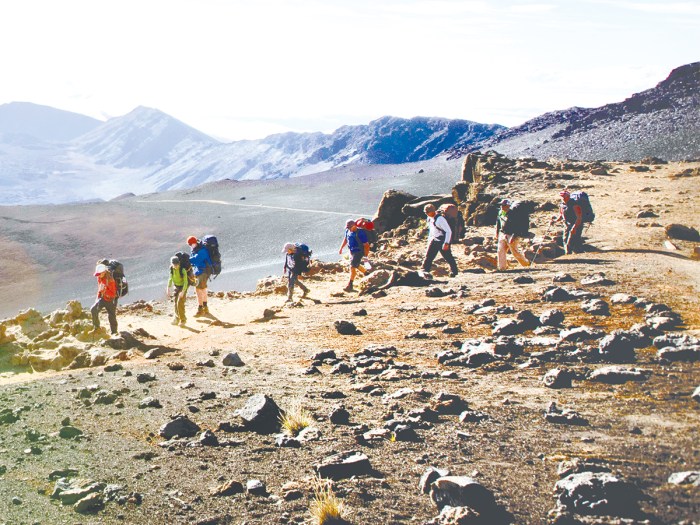
Kilroy was here (wrong, OK now that we got that out of the way just buy a pair of red wings)
Hi!
I love the way you explain the “point” very well. Your content is full of information and can’t wait to dig it into utilizing the resources you provided. I was actually writing a blog on “Hiking for Beginner – The Most Common Questions” and thanks for your point of view help me to find some key points to focus on.